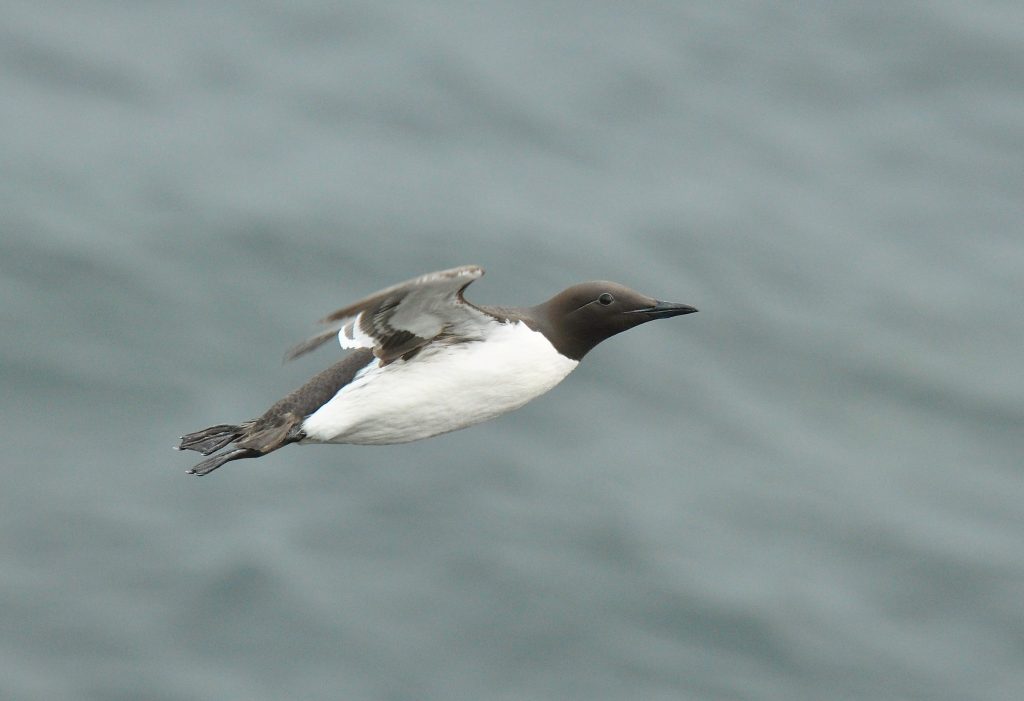This is an abundant breeding species on each of the four main Pribilof Islands, which is found less regularly during the winter months. The species begins to return to the islands and nesting sites by early-mid April with substantial numbers present by the end of that month or early May and full numbers on the cliffs by early June. Their numbers remain similar through much of the breeding season, which lasts into early September with breeding figures varying from island-to-island. There are approximately 100,000 breeding pairs on St. George Island, 7,500-10,000 breeding pairs on St. Paul Island, 5,000 breeding pairs on Otter Island, and 500 pairs on Walrus Island. The colony on Walrus Island was once substantially larger, though predation by Arctic Foxes (Vulpes lagopus) in particular decimated the colony. Few remain on the cliffs by September 15th, but the species can be seen regularly on the water around the islands through mid-October. It becomes increasingly pelagic during the fall and into the winter with sightings irregular at that time (though they can be seen in large numbers depending on weather conditions) and they may be completely absent from the vicinity of the Pribilofs depending on the extent of the winter sea ice.
A “Bridled” Common Murre has been noted twice at St. Paul Island.


